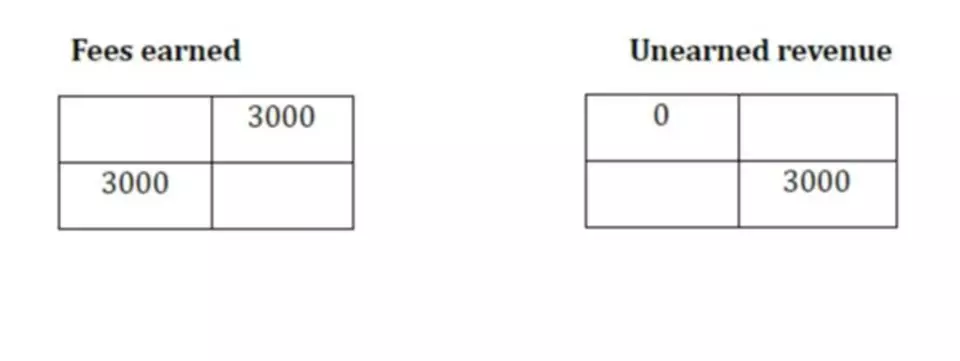Content

After all, day-to-day responsibilities don’t get put on pause during the close — you’re expected to handle both. You could also look at investing in automation solutions that support data aggregation and segmentation. HighRadius’ Autonomous Accounting Solution provides financial close automation which offers project templates, close task management, and accounting anomaly detection.
What it comes down to is being able to proactively monitor business performance for competitive advantage. Finally, you must officially close the period in your financial system and distribute the financial statement. This can be a monotonous task to undertake every month but ignoring it can lead to problems later on. Companies that don’t close their books each month often scramble toward end of the year to find information they need for reporting. Oversights can occur, mistakes can be made, and annual reports can be delayed or flawed.
Review the inventory
In addition, your accounts payable records can impact everything from your business’s cash flow to its ability to attract outside investors, its credit rating, and even its borrowing costs. Perhaps the most compelling advantage to automated month-end close is audit readiness. Automated business processes not only allow standardization of operations but also ensure maintenance of records throughout the year, thereby creating an audit trail. The accounting close process is important because it provides an insight into the financial health of the company. This process also facilitates financial and operational planning, and provides the basis for strategic business decision-making.
Proper preparation is another important factor in ensuring the close process is conducted quickly and accurately. One of the first steps in a systematized close process should be tying up the month’s loose ends. When preparing to close, contact department heads to check month end close process on budget adherence, unexpected expenditures, anticipated last-minute sales, and more. Verify anticipated vendor payments to ensure receivables will arrive on time. Email your stakeholders for any pertinent information needed to contextualize the close process.
How To Prevent Common Accounting Errors During Year-End Close
Manual accounting involves tracking receipts and cross-checking them with withdrawals from petty cash. Accounting systems aren’t homogenous entities; they usually come in modules covering specific purposes such as an accounts payable and an accounts receivable department. Part of the closing process is reconciling all these components together. Too much detail in your financial reporting can also lead to delays in the month-end close. That may include a bloated chart of accounts where much time is spent tracking information, but where the reporting against it provides little business value.
With Versapay, accounting teams can match payments to invoices and post them to their ERP automatically as they come in, which saves the time and trouble of having to do this during the month end period. With Versapay’s collaboration tools, accounting staff can also better coordinate how they follow up with customers on past-due invoices and how they apply payments. Now that your main steps are done, you can get ready to repeat the process again next month.
Prepare Financial Statements
If a company waits until the end of the year to review financial data, the information is often stale and much less useful. The first step in the month-end close process is to set up closing dates and define month-end close procedures. Once you have a clear understanding of when your company’s financial statements are due, it’s time to create a process that will help ensure they are prepared on time. Your accounting team needs financial data from many sources like inventory, accounts receivable, and accounts payable to complete their month end close. Companies often have separate software systems to manage these distinct functions. To minimize the work of sourcing data, it’s helpful to integrate as many of these systems as possible.

In many cases, accounting teams unfortunately lack the coordination, automation, and data management capabilities that make for a smooth accounting close. A disorganized monthly closing process takes a toll on decision-making, budgeting, and forecasting. Of all the processes the finance team covers, the month end close process especially deserves your attention. The month end close process is a complete review of financial activity and performance for an entire month and the preparation of monthly financial statements. It supports your ability to conduct quarterly and year-end financial closes accurately and efficiently.
To help, we’ve put together a list of 8 must-do steps that can help you end the perpetual cycle of month-end closing stress. In fact, Accounting Today reports that 36% of their 259 surveyed accounting and finance professionals say they’ve had to reschedule out-of-work commitments during the month-end close process. An accurate month end close process gives clients the financial information to make necessary improvements to their business.
So, doing it in a hurry and making mistakes won’t help, especially if you plan to refer to these statements for your year-end close. Accurate monthly financial reports help you improve transparency and track KPIs correctly. If multiple teams are involved in the monthly closing process, then keeping track of the status of tasks is going to be a significant pain point. HighRadius’ Autonomous Accounting Solution gives real-time visibility into the different financial tasks and ensures activities that involve multiple stakeholders don’t get slowed down. The month-end close process includes reviewing the company’s balance sheet, intercompany trades, journal entries, and other documents (like bank statements, income, and expenses) and reconciling them.
Stay up to date on the latest accounting tips and training
Remember, your specific procedures may vary based on your industry, accounting methods, available technology, etc. If you’re using a cloud-based, automated solution such as Planergy, many of these data sources will already be connected, organized, and ready for real-time access, manipulation, and analysis as needed. Your goal https://www.bookstime.com/ must be to reconcile as many accounts as you can each month. These are accounts that deal with high volumes of transactions, making them susceptible to being off by a notable amount. The month-end close process is a complicated procedure wherein you need to gather, analyze, reconcile, and adjust data from various systems.
- Your success is our success.From onboarding to financial operations excellence, our customer success management team helps you unlock measurable value.
- Automation provides a number of advantages for the monthly closing process.
- Every financial statement should be constructed carefully and with an eye for accuracy.
- What it comes down to is being able to proactively monitor business performance for competitive advantage.
- In order to “close the books” and set the financial records in stone, so to speak, companies cross off the month end closing checklist.
- If you’re fighting for time, aim to catch up with your reconciliation ahead of the month end close process.
There will likely be various tools and systems involved, especially because of the sheer amount of data required for the account close process. When it’s complemented by financial automation tools, your organisation and finance team has the power to unlock immense time savings, error reduction, and workflow optimisation. If your company maintains a physical inventory of materials or finished goods, a monthly count will reveal any discrepancies created by error, damage, theft, or spoilage. Mark-downs due to inventory shrinkage should be recorded as losses in the month they occur. On the other side, imagine your company purchased $5,000 in office supplies this month, and received an invoice from the vendor.
Check Your Fixed Assets and Petty Cash Fund
Besides having a well-thought-out plan and month-end workflow, let’s review some best practices that can help make your end-of-the-month processes go as smooth as possible. The flowchart below provides a visual overview of the month-end close process and the key activities that take place in each step. Emma’s 70-person geographically distributed accounting team improved internal controls and streamlined the audit thanks to FloQast.
An accountant’s job is never a single entity with a beginning and an end. It can, at best, be broken down into bite-sized pieces of monthly reconciliations so that the account close process does not become overwhelming at the end of the financial year. McKinsey showed that 45% of current paid activities that cost an equivalent of $2 trillion in total annual wages, can potentially be automated.


